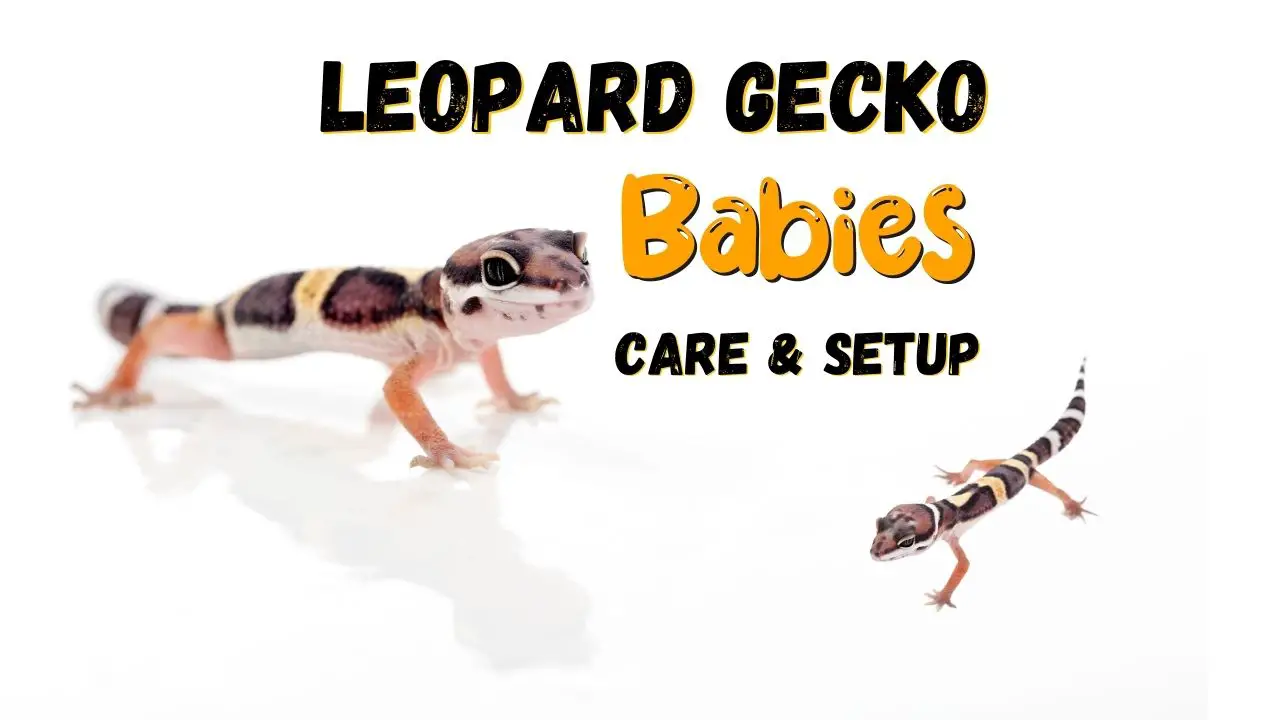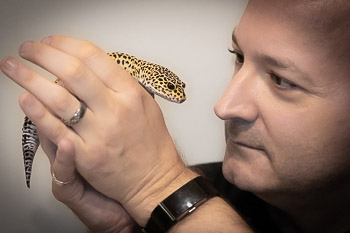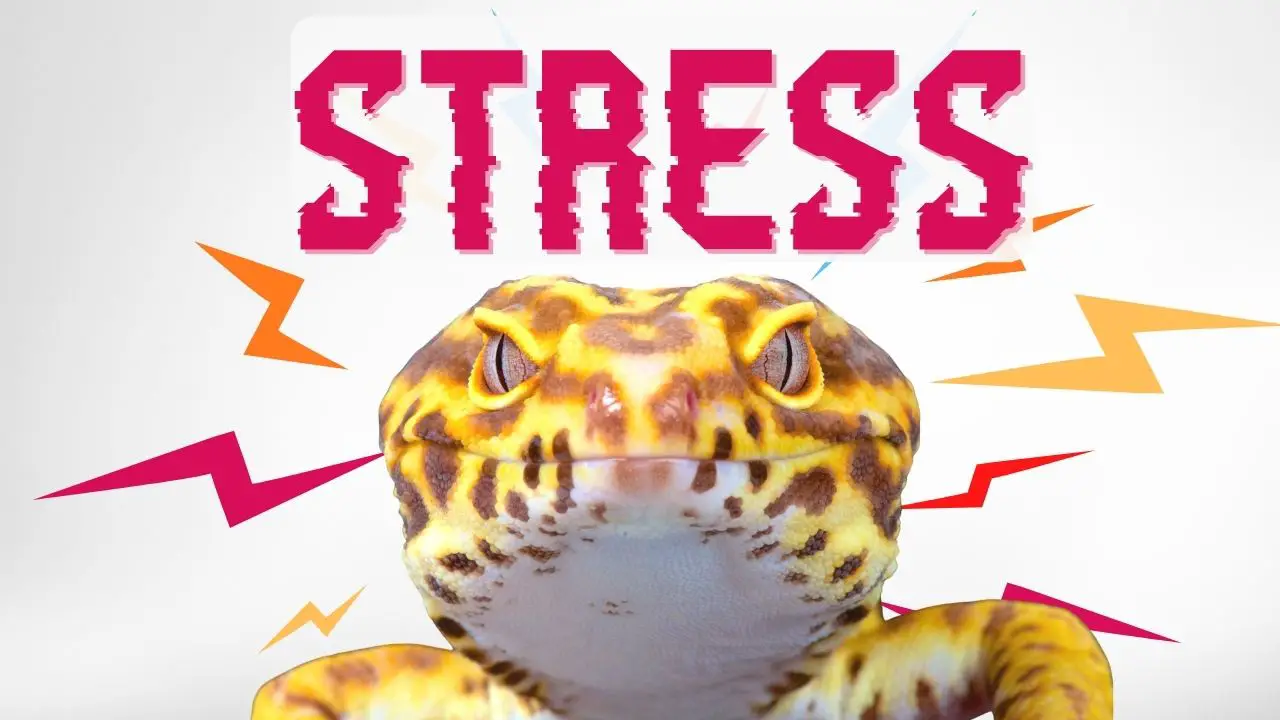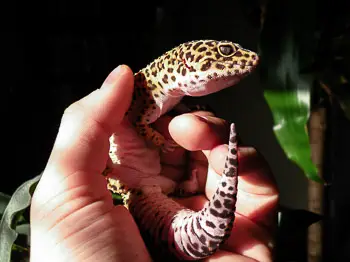The baby leopard gecko makes the perfect pet for a first-time lizard owner! These easy to care for geckos are docile by nature and require very little maintenance plus, with the proper tank setup, this gecko is a fascinating study in life science for younger family members.
Even though they are low-maintenance pets, leopard geckos still require care, so today, let us look in-depth at tank setup and care for the baby leopard gecko. We will touch on:
- Leopard Gecko Hatchlings
- Setting up a Baby Leopard Gecko Tank
Leopard Gecko Hatchlings
Leopard gecko hatchlings measure between three and four inches long when they hatch. By adulthood, the female leopard gecko will measure between seven and eight inches long, and the male leopard gecko, seven to eight inches long.
When they hatch, baby leopard geckos are not yet ready to take on the world by themselves. These babies do not yet have a fully formed skeletal system, newly hatched geckos also have an underdeveloped immune system which leaves them open to opportunistic infection. Learn what to look for and make sure you’re getting a healthy animal in our post on picking out a leopard gecko.
In short, baby leopard geckos need a safe tank where they can mature without exposure to illness and where you can monitor and manage their nutrition.
Before we talk about setting up your gecko tank, let us cover some tips for the newer gecko owner that is starting with a leopard gecko hatchling.
Caring For a Baby Leopard Gecko
Immediately after your baby geckos hatch, you must relocate them to a safe “holding area.” Put each hatchling in a small plastic enclosure (approximately 10” long x 8” wide and x 6” high) with moist paper towels to maintain some humidity. This small hatchling home should also have a “hide” where the baby can seek shelter when needed.
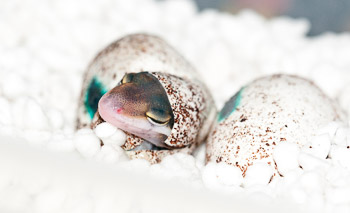
During this time, new hatchlings should only receive water but no food. Once the hatchling has fully absorbed their yolk sack (within the first few days) and gone through their first shed (within the first week,) you will have a good idea of how well they are thriving. You may notice that your gecko starts to eat their shed skin – this is not abnormal.
Related Post: Leopard gecko Shedding
After they shed their skin for the first time, the baby Leopard Gecko will begin looking for food and will be able to start eating. Due to their size, though, the baby Leopard gecko may only eat a single cricket at a time.
Usually, this stage of care is done by breeders and you won’t see leopard geckos for sale until they’re able to eat insects on their own.
By around one month old, your baby leopard gecko should be eating well and thriving and can transfer into a larger tank.
Feeding a Baby Leopard Gecko
Once you begin feeding your gecko, any live food should be gut loaded and dusted to ensure that your gecko is receiving maximum nutrition from each meal. This is especially crucial for hatchling geckos, as they are growing rapidly and need the right nutrients.
Gut loading is where you feed crickets, mealworms, or other live food items the healthiest foods possible so that when consumed by your gecko, those nutrients pass on to them.
Food items should be no larger than the space between your gecko’s eyes. You’re looking primarily for small crickets, mealworms, or dubia roaches at this stage.
Also, be sure to remove uneaten food items from the enclosure. Baby geckos are small and wandering cricket or mealworms may munch on your gecko – especially the toes!
Check out our Leopard Gecko Feeding Guide for more information on what, how much, and when you should be feeding.
Vitamin Supplements for Geckos
Calcium is an important part of a developing leopard gecko’s diet, and supplements are the best way to ensure you’re providing enough. Dusting is where you dust live food items with a multi-vitamin powder/calcium so that your gecko receives these supplements upon eating the prey item.
Calcium deficiency may lead to Metabolic Bone Disease (MBD) where the gecko’s bones are weak, rubbery, and/or malformed. Dusting insects in calcium powder is the best way to avoid this. You can read more about MBD and other ailments in our post about sick geckos.
Setting Up a Tank For Leopard Gecko Hatchlings
What makes a good tank for a baby leopard gecko?
Tank Size
Leopard geckos are not arboreal, and they need an aquarium tank that is longer than it is tall. A 20-gallon tank is a common size for the average home gecko setup. This should be enough room for a single adult gecko, and larger tanks can present a challenge regarding heating, adding humidity, and lighting the tank.
A 10-gallon tank is adequate for gecko hatchlings and juveniles, but you should upgrade to a larger tank as the gecko grows.
You can get a tank made specifically for leopard geckos, or if considering an aquarium, get a long one. These tanks are longer instead of taller, and leopard geckos will appreciate more floor space than height since they are not avid climbers. For a 20-Gallon tank, this one with the front opening, or this 20 Gallon Long aquarium would make good choices.
It is possible to house multiple hatchlings in one tank, but only when they are the same size. (You’ll often see this at larger chain pet stores.) It’s far preferable to keep hatchlings individually so that you can monitor health, growth, food intake, etc.
Read more in our post about considerations when housing geckos together.
Tank Cover
The gecko’s tank should have a well-secured mesh lid. Mesh allows for airflow and ventilation but also ensures no Houdini geckos can escape.
Related Post: What Do I do if My Leopard Gecko Escapes?
If you opt for a front opening enclosure designed for reptiles, you won’t need a separate tank lid.
Lighting
There’s debate about leopard geckos need for UV/UVB light. They are crepuscular, so are rarely out and about during daylight in the wild and don’t get much benefit from the ultraviolet light. The light can help provide heat in the tank and warm rocks and other surfaces your gecko may rest on, just as it would in their natural habitat.
Regardless of the kind of light, you should provide a natural day/night cycle. You can do this with a simple Christmas light timer. We use a Smart Plug, which you can set to turn on and off at dusk and dawn.
Since we’ve got a bulb to simulate daylight, why not use a simple UBV bulb anyway?
If you’re going to provide UVB lighting, keep in mind that leopard geckos can sunburn, so it is best to stick with low-intensity UVB light.
Substrate
Substrate is the bedding that goes on the bottom of the tank. There are many opinions on the right and wrong types of substrates for leopard geckos, but broadly speaking, paper towel is the best starter substrate for hatchling to juveniles. Sure, it’s not the coolest looking, though it is inexpensive and easy to clean and replace. More importantly, paper towel is a safe substrate.
As your gecko matures, a commercial leopard gecko substrate is the best and safest option for most hobbyists. Steer clear of sand, especially for hatchling or juvenile geckos. They may ingest it and risk impaction (which you can also read more about in our post on sick leopard geckos.)
Check our full post on leopard gecko substrate to learn more about what you should put on the bottom of your tank.
Heating
Reptiles are cold blooded, and need an external heat source. A heat mat on one side of the tank is the best heating for leopard geckos. A reptile heating pad sits underneath the enclosure and creates a warmer spot in the tank. Leopard geckos rely on belly heat to help them digest their food, and an under tank heater provides the heat where they need it.
You can use a ceramic heat emitter or heat lamp as supplemental heat, just be sure to monitor the temperature and provide a warm and cool zone.
You may also come across “heat rocks.” Avoid these, as they can severely burn a lizard, especially when they are small.
Related Post: Best Leopard Gecko Heat Sources
Thermometer
A thermometer is another “must-have” for your gecko’s tank. Having temperatures too low or too high can slow bodily processes, impact nutrient absorption, and even cause death.
A simple digital thermometer like the one here has a suction cup display with a probe that you can place in the tank. They are also available in a

